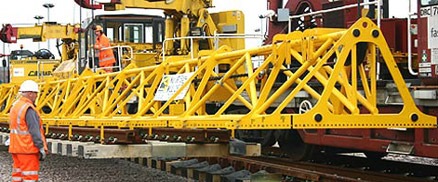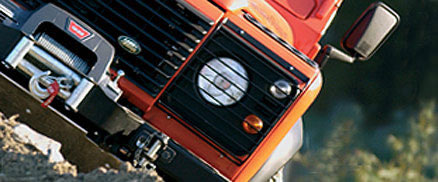November 27th, 2010
When it comes to off road driving it is a very different driving skill than normal road driving. You only appreciate how different once you have had a go driving on a road and then an unmade track and perhaps got it wrong. Driving off road requires an entirely different thought process to how you would drive on the road.
You build up instincts and reactions as a driver, whether you have been driving for 5yrs or 25 years these reactions usually surface when something starts to go wrong – for example going round a sharp bend in wet conditions – you are cornering slightly too fast and the back of the vehicle starts to slide out! To try and prevent losing control you would steer into the slide. Unfortunately if you rely on these same instincts when driving off road is not so good. There is a good chance that you may do entirely the wrong thing and the result could be quite serious.
Firstly never under estimate the capability of your 4×4. Fully understand the vehicle and make sure you have read and are familiar with all aspects of the driver’s handbook. Make sure you understand the technical information of the car, weight limits, features and limitations as well as all safety considerations. 4×4 vehicles are all terrain capable but you still have to drive safely as poor judgement can result in personal injury and loss of vehicle use. Take the time to fully get to know your 4×4 is it petrol or diesel, manual or automatic. What type of suspension is fitted and what are the limitations.
Pre driving checks are necessary before you take your 4×4 on your off road adventure. These checks are necessary to prevent any unwanted breakdowns. Ensure your tyres have good grip for the surface you are driving on. Check your lights are fully functional as these are your eyed when it is dark or conditions are rough
Always plan your journey and the things that could go wrong and prepare your vehicle accordingly. Consider what you may need to take with you for example first aid kits, fire extinguishers and methods of communication may be essential if you are miles from the nearest village.
Posted in Arbil 4x4 |
October 23rd, 2010
Tangye’s hydraulic jacks are in daily use throughout the world working efficiently for customers who require jacks for a variety of applications from supporting bridges to lifting the nose end of F16 fighter planes.
Tangye jacks are used by the following industries – construction, industrial, automotive, mining, railroad and manufacturing.
All Tangye Hydraulic Jacks are built with the following characteristics:
Portable
Extensive use of high strength aluminium alloys has minimised jack weight for improved portability.
Reliability
All moving parts are totally enclosed and lubricated by the hydraulic oil. Seats are highly resistant to deterioration under widely varying climatic conditions. Their long working life make Hydralite jacks the choice of many rental operations.
Safe – Overload Protection
A high pressure relief valve prevents lifting of loads in excess of the jack’s capacity while locking overloads applied to the ram
Overstroke Protection
Hydralite jacks are fitted with a fail-safe positive stop mechanism which prevents overstroking of the ram by venting oil to the reservoir when the stroke limit is reached.
Load Sustaining
Jack models incorporating a threaded ram and load retaining ring, model – SR, should be selected when loads are to be sustained for a significant time. No need to rely on hydraulic fluid pressure.
Quality Assurance
Every jack is serial numbered, fully tested and certified.
Posted in Arbil Rail |
October 23rd, 2010
The following are some guidelines on the safe use of winches when used for lifting:
Always:
- Store and handle winches correctly.
- Inspect the winch, rope and accessories before use and before placing into storage.
- Ensure mounting and suspension points are secure and suitable for the full loads that will be imposed.
- Lift the load just clear, halt for a short period to ensure the integrity of the brake or sustaining mechanism before completing the lift.
- Use a speed appropriate to the specific application.
- Keep hands and feet clear of ropes, drums etc.
Never:
- Raise loads by revolving the drum in the opposite direction to that indicated.
- Use winches with loose or insecure handles.
- Use the pawl to arrest descending loads.
- Use winches if the rope is twisted or trapped.
- Over wind the rope on or off the drum.
- Use winches for man-riding applications unless they are specifically designed for that purpose.
Storing and Handling Winches
- Never return damaged winches, ropes etc to storage. They should be dry, clean and protected from corrosion.
- With winches used for temporary applications, remove the rope for separate storage or wind it fully onto the drum and lash in position to prevent damage.
- With winches left in situ, remove pulleys etc and wind the rope fully onto the drum. Where this is not possible, pulleys etc should be positioned to protect them from damage and so as not present a danger to persons or other equipment. Isolate any power supply.
Regularly inspect the winch and, in the event of the following defects, refer the winch to a Competent Person for thorough examination: mounting insecure; loose or missing bolts; winch frame distorted; rope drum flanges chipped or cracked; rope anchorage loose or pulled; ratchet or pawl worn; brake worn or slipping; rope worn, or winding incorrectly; broken wires; gears worn, or not positively locating; any other visible damage, corrosion, defects or operational faults.
Posted in Arbil Lifting Gear |
October 23rd, 2010
Driving on soft sand is not the easiest thing to do but with some preparation and safety tips can be an enjoyable and fun experience in your 4×4.
- As soon as the surface gets softer than a road select the 4×4 drive. Then, when leaving the sand, don’t forget to switch the 4×4 off again. If you don’t do that, it will put stresses on the driveshaft, gearbox and transfer cases as well as cause unnecessary and uneven tyre wear.
- Always reduce the tyre pressure just before going on the sand. This will influence your vehicle performance as the more air you let out, the more tyre will be on the sand, and the better flotation you’ll get.
- If you are afraid to drive on the soft sand, drive on the hard sand just next to the water. It’s worth remembering, though, that patches of soft sand might be found everywhere.
- One of the most common mistakes while driving on sand is to use high gear without leaving any reserve. This will most probably caught you stuck in the sand. If you use lower gear, you can respond more quickly.
- If you start getting stuck, don’t rev the power and dig a bigger hole. Try to stop the vehicle and reverse out on a fresh track.
- Drive off slowly only if all four wheels are safe on the firm sand.
- Try to avoid driving your 4×4 in the sea. It will deteriorate your vehicle quickly even if you give it a rinse afterwards. Another thing is you can sink easily when you stop in the water.
Posted in Arbil 4x4 |
October 3rd, 2010
Lifting beams, frames and spreaders are usually designed and built
for a specific purpose. The range of designs and capacities is therefore only limited by practicality. When selecting the beam to be used you need to plan the lift taking the following into account:
Application requirements:
- to reduce headroom, provide multiple lift points,
- to provide adjustable lifting centres,
- to handle out of balance loads,
- to remove or control inward or crushing forces, to allow for special load attachments.
Capacity, both of the overall beam and of the individual lift points.
Accessories and attachments – slings, grabs, shackles, hooks etc.
USING LIFTING BEAMS SAFELY
- Lifting beams may incorporate various loose and detachable items of lifting gear. Refer to the separate requirements for the safe use of those items.
- Do not use defective or distorted beams or attachments.
- Lifting beams are generally designed for a specific purpose and should not be used for other purposes without consulting the supplier. This will include the size of crane hook from which they are suspended. On no account should lifting beams be suspended from unsuitable size hooks.
- The weight of the beam, together with its attachments, must be added to the weight of the load when calculating the total load that will be imposed on the crane hook.
- Ensure that the SWL on the individual lift points is not exceeded. Extra care is needed where these are adjustable.
- Ensure the load is stable and that the beam remains at its intended attitude during use. Particular care is needed when lifting and setting down as not only may the load become unstable but individual lift points may become overloaded,
- Use tag lines to control long loads.
- Do not allow the beam to foul the underside of the crane, or any other obstructions, when raising or transporting loads.
Posted in Arbil Rail |


